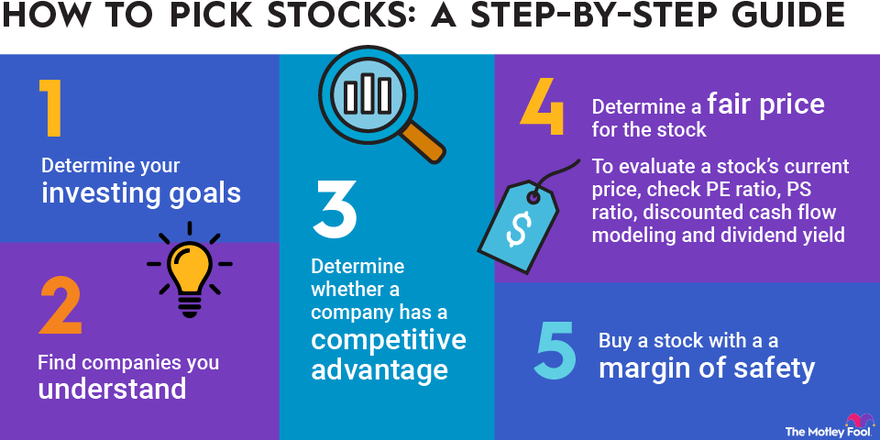Considering factors like company performance, industry trends, and your financial goals can help determine if a stock is worth investing in. Evaluating the company’s financial reports, growth prospects, and competitive strength can further inform your investment decision.
Drinking a stock may be profitable if you have a long-term investment horizon and understand the risks involved. Conduct thorough research into the company’s management, products, and potential for future growth. Weighing the potential return against the risk and diversifying your portfolio can also play a role in determining if a stock is worth investing in.
Keep in mind, professional advice can provide valuable insights. Always consider consulting with a financial advisor for personalized recommendations.
1. Assessing Your Financial Goals
When considering investing in a stock, it is crucial to assess your financial goals. This involves examining both short-term and long-term objectives to determine if a particular stock aligns with your overall investment strategy.
1.1 Short-term Goals
Short-term goals involve financial milestones you aim to achieve within a period typically less than a year. These may include saving for a vacation, purchasing a new car, or paying off debts. When evaluating a stock for short-term investment, consider the potential for quick gains or the need for liquidity.
1.2 Long-term Goals
Long-term goals are those that span over several years or even decades, such as retirement planning or building wealth for future generations. Investing in stocks that demonstrate consistent growth and stability may be more suitable for long-term goals, allowing for compound returns to work in your favor over time.
:max_bytes(150000):strip_icc()/beginner_guide_to_picking_stocks_FINAL-174b244be44840699c2bbcd0c67025e1.png)
Credit: www.investopedia.com
2. Researching The Stock Market
When it comes to deciding whether to invest in a stock, conducting thorough research on the stock market is crucial. This involves understanding the basics and analyzing market trends to make an informed decision.
2.1 Understanding The Basics
Understanding the basics of the stock market is essential before making any investment decisions. This includes grasping concepts such as stock prices, market capitalization, earnings per share, and dividend yields. Knowing how these factors influence a stock’s performance is vital for successful investing.
2.2 Analyzing Market Trends
Analyzing market trends is an integral part of stock market research. It involves studying historical price movements, volume trends, and market indicators. By examining these factors, investors can identify potential opportunities and risks in the market, helping them make informed investment decisions.
3. Evaluating Company Performance
Before investing in a stock, it’s crucial to thoroughly evaluate the company’s performance to make an informed decision. Several factors should be considered, including financial statements and company management.
3.1 Financial Statements
One of the key indicators of a company’s health is its financial statements. These statements provide valuable insights into the company’s revenue, expenses, and overall financial position. Investors should analyze metrics such as revenue growth, profit margins, and cash flow to gauge the financial stability and growth potential of the company.
3.2 Company Management
In addition to financial performance, evaluating the company’s management is essential. A capable and experienced management team can drive the company towards success. Investors should assess the background and track record of the executives, their strategic vision, and their ability to effectively navigate challenges and capitalize on opportunities.

Credit: www.fool.com
4. Assessing The Stock’s Valuation
Before deciding to invest in a stock, it’s crucial to evaluate its valuation metrics. Understanding how the market prices a stock can help you make informed investment decisions.
4.1 Price-to-earnings Ratio
A price-to-earnings ratio (P/E ratio) is a key indicator of a stock’s valuation. It compares the stock price to its earnings per share (EPS), giving you insight into how the market values the company’s earnings potential.
4.2 Dividend Yield
Dividend yield is another important factor to consider when assessing a stock’s valuation. It is calculated by dividing the annual dividend per share by the stock price, indicating the return you can expect from dividends.
5. Considering Risk Factors
5. Considering Risk Factors
When investing in stocks, it is essential to consider the various risk factors associated with the investment. Only by analyzing and understanding these risks can investors make informed decisions and minimize potential losses. Here are two significant risk factors to consider:
Industry risks refer to the uncertainties associated with the specific sector in which a company operates. Understanding industry risks is crucial as it allows investors to gauge the potential challenges and fluctuations that may impact the stock’s performance. Some common industry risks include:
- Regulatory changes: Government regulations can significantly impact an industry’s profitability. Legislation changes could restrict business operations or impose additional costs, causing stock prices to fluctuate.
- Competition: Intense competition within an industry can affect a company’s market share and profitability. Investors need to consider whether a company has a competitive edge or is susceptible to losing market share to competitors.
- Technological advancements: Industries heavily reliant on technology are prone to rapid advancements that can render current products or services obsolete. Investors must assess whether a company has the capability to adapt to technological changes.
- Economic factors: Certain sectors are more sensitive to economic conditions. A deteriorating economy can lower consumer spending, impacting industries such as retail or hospitality.
- Environmental factors: Industries with a significant environmental impact, such as energy or manufacturing, face increased scrutiny and potential regulations. Investors need to assess the potential risks and the company’s ability to adapt to environmental challenges.
- Global events or pandemics: Unforeseen global events, like pandemics or political instability, can disrupt industries on a large scale. Investors must consider the resilience of a company during such crises.
In addition to industry risks, investors should also evaluate company-specific risks. These risks are unique to each company and can significantly impact its financial performance and stock value. Common company-specific risks to consider include:
- Management stability: Strong and effective leadership is essential for a company’s success. Poor management decisions or instability can negatively impact operations and shareholder confidence.
- Financial health: Assessing a company’s financial statements, including its revenue, expenses, debt levels, and cash flow, helps determine its financial stability. High levels of debt or consistent losses may indicate potential risks.
- Product or service quality: The quality and reliability of a company’s products or services are crucial for sustainable growth. Frequent product recalls, quality issues, or customer dissatisfaction can harm a company’s reputation and stock performance.
- Legal and regulatory risks: Companies facing lawsuits, regulatory investigations, or non-compliance issues may experience financial losses and reputational damage.
- Market share and customer base: A company’s market position and customer loyalty impact its long-term profitability. Losing significant market share or customer base to competitors may signal potential risks.
By thoroughly considering both industry risks and company-specific risks, investors can make more informed decisions regarding stock investments. Conducting thorough research, analyzing financial data, and seeking professional advice can provide a clearer understanding of the potential risks and rewards associated with a particular stock.
6. Diversification And Portfolio Allocation
6. Diversification and Portfolio Allocation
One of the key strategies to success in stock investing is diversification and portfolio allocation. This involves spreading your investments across different stocks and sectors to minimize risk and maximize returns. It is important to achieve a balance between risk and return to ensure a healthy and well-managed investment portfolio.
6.1 Spreading Investments
Spreading your investments across different stocks and sectors is crucial to minimize the impact of any single stock’s poor performance. By allocating your resources across a diverse range of stocks, you can reduce the potential losses and protect yourself from market volatility. Diversification ensures that even if one investment underperforms, the overall impact on your portfolio is minimized.
Creating a well-diversified portfolio can be achieved by investing in companies from different industries, such as technology, healthcare, finance, and consumer goods. It is also advisable to consider investing in different geographies or markets, as global economic conditions can vary greatly. This will help to protect your investments from localized risks and ensure stability.
6.2 Balancing Risk And Return
When investing in stocks, it is important to balance risk and return. Higher risk investments often have the potential for higher returns, but they also come with the risk of significant losses. On the other hand, low-risk investments may offer more stability but typically provide lower returns.
Understanding your risk tolerance is essential when allocating your investments. Assessing how much risk you can afford to take will help guide your decision-making process. If you are more risk-averse, you may choose to allocate a larger portion of your portfolio to low-risk, stable stocks. However, if you are comfortable with higher risk, you may consider including some high-growth stocks that have the potential for substantial returns.
Regularly reviewing and rebalancing your portfolio is vital to maintaining the desired balance between risk and return. Market conditions and individual stock performances can change over time, and it is important to adjust your portfolio accordingly. This can involve selling some stocks that have performed well and reallocating the funds into promising new opportunities. By continuously monitoring your portfolio, you can ensure that it remains optimized for your desired risk and return levels.
7. Evaluating Professional Advice
When evaluating professional advice before investing in a stock, consider different sources to make an informed decision.
7.1 Financial Advisors
Seek guidance from certified financial advisors who can provide personalized recommendations.
7.2 Investment Newsletters
Stay informed by subscribing to reputable investment newsletters for valuable insights.

Credit: www.fool.com
8. Monitoring And Reviewing Investments
After making an investment in a stock, it’s crucial to continuously monitor and review its performance to ensure that your capital is being utilized effectively. Regular reviews of your investments allow you to make informed decisions about whether to hold, buy more, or sell your stocks.
8.1 Regular Performance Assessment
Regularly assessing the performance of your investments is essential to determine if they are meeting your financial goals. This involves analyzing how the stock is performing in comparison to the market and your own expectations. Keep track of key performance indicators such as earnings per share, revenue growth, and market share to gauge the company’s financial health.
8.2 Making Adjustments
When necessary, making adjustments to your investment portfolio is vital to respond to changing market conditions and maximize returns. This may involve rebalancing your portfolio by buying or selling stocks, reallocating assets, or diversifying to reduce risk. Regularly reviewing your investments empowers you to take timely action to optimize your financial position.
Frequently Asked Questions Of How Do You Know If You Should Invest In A Stock
How Can You Determine If A Stock Is Worth Investing In?
To determine if a stock is worth investing in, analyze the company’s financial health, growth prospects, and industry trends. Look at key factors such as revenue, earnings, debt, and market share. Consider the company’s competitive advantage and potential for future profit.
Research industry trends and market conditions to make an informed investment decision.
What Are The Indicators Of A Good Stock To Invest In?
A good stock to invest in typically has strong financials, a competitive advantage, and a solid track record of growth. Look for companies with increasing revenue, a healthy profit margin, and strong cash flow. Consider factors like a sustainable business model, strong management team, and a positive industry outlook.
Conduct thorough research and analysis before investing.
How Do You Evaluate The Risk Of Investing In A Stock?
Evaluating the risk of investing in a stock involves assessing various factors. Analyze the company’s debt levels, earnings stability, and industry risks. Consider economic factors that may impact the company’s performance. Assess the company’s competitive position, market share, and potential for disruption.
Diversify your portfolio to mitigate risk and seek professional advice if needed.
When Is The Right Time To Invest In A Stock?
The right time to invest in a stock depends on your investment goals and risk tolerance. Consider factors such as market conditions, company performance, and valuation. Downturns or market corrections can present buying opportunities, while overvalued stocks may warrant caution.
Determine your investment horizon and consult with a financial advisor to make an informed decision. Timing the market is challenging, so focus on long-term growth potential.
Conclusion
Ready to decide whether to invest in a stock? Consider financial goals, risk tolerance, and research. Remember, diversification is key. Watch market trends but don’t let emotions drive decisions. Stay informed and seek professional advice if uncertain. Good luck with your investment journey!




